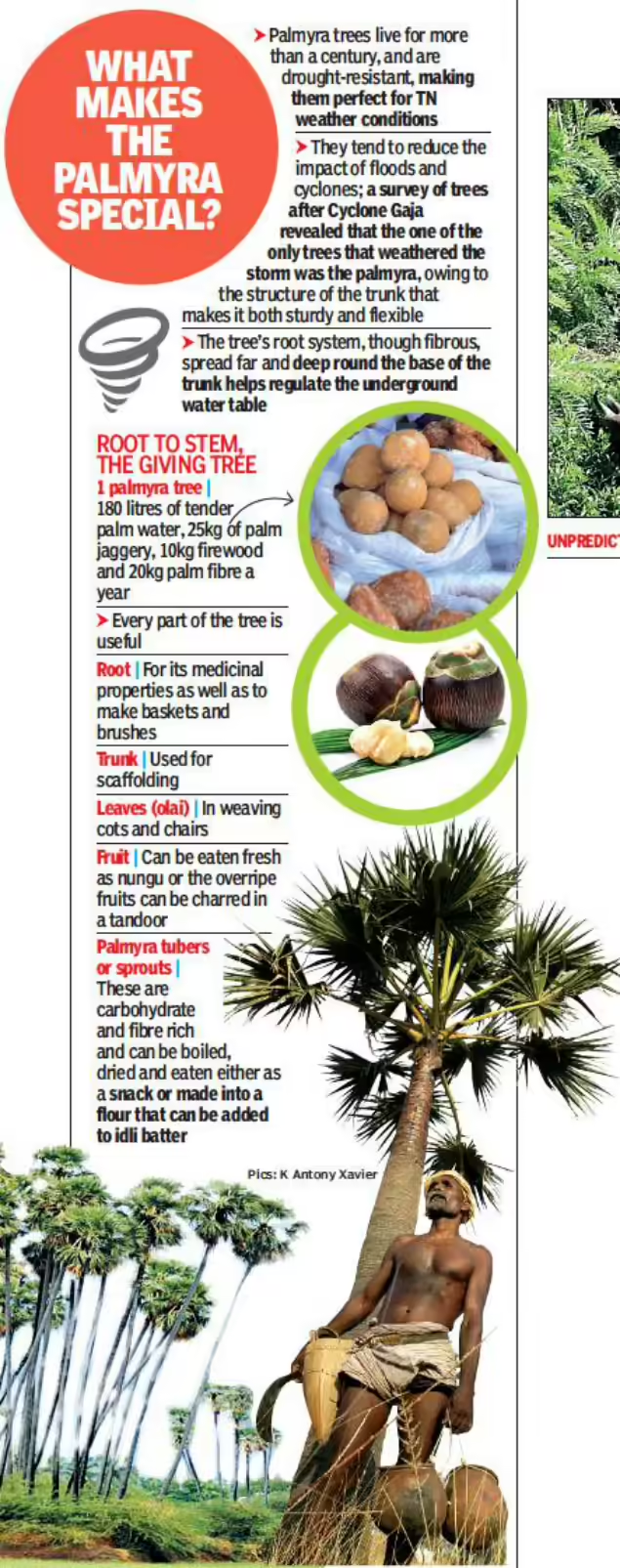Palmyra Palm Trees | 25 Aug 2025
Odisha has restricted the felling of Palmyra palm trees due to their ecological and social benefits.
Palmyra Palm Tree (Borassus flabellifer)
- About: It is indigenous to South and Southeast Asia, highly drought-resistant and recognised as the State Tree of Tamil Nadu.
- It is found mainly in Odisha, Andhra Pradesh, West Bengal, and Tamil Nadu.
- It is revered in Tamil culture as Karpaga Vruksham (“celestial tree that gives everything”), and its palm leaf manuscripts were vital in preserving Tamil language and literature for centuries.
- Ecological Role: Its fruits (tala) ripen in July–August, serving as food for elephants during lean seasons and reducing human-elephant conflicts, its tall structure acts as a natural lightning conductor, lowering monsoon fatalities.
- Its deep root system aids groundwater recharge, drought resilience, and soil erosion prevention along water bodies and coasts.
- Significance: Its fruit kernel (nungu) serves as a mineral-rich summer coolant, while palm sugar (panai karuppatti) & jaggery, and beverages like padaneer (sap) and toddy offer healthier traditional alternatives to modern products.
- Leaves support roofing, mats, and handicrafts, and its wood provides construction material and fuel.
| Read More: Prioritising Oil Palm Plantation |

